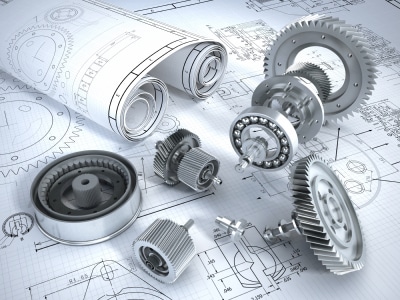One of the often under talked about features that CAD software is used for is not only the ability to create brand new, shiny and effective products and items using clever techniques and methods. CAD software also allows us to travel back in time and examine things in different ways; allowing the reverse engineering of anything from parts to objects and even mechanisms and buildings. Reverse engineering doesn’t just teach us how things have been done, it gives us new and different ways to make things better based on past knowledge.
Reverse engineering for prototyping
A pioneering and fascinating use of 3D design work, reverse engineering can take one thing and make it available in its thousands; making it a particularly valuable asset for use with small-scale prototypes, prototypes designed by hand. The big positive to having reverse-engineered designs is you can save as many files, and make as many small tweaks, as you have to when developing a design. You always have the original file to refer back to if needed.
For rigorous testing and development, reverse engineering is invaluable for this reason, especially when things don’t go as expected. Allowing you to compare an original design versus a real-life counterpart that may have been warped. Or damaged side-by-side to establish anything from problem areas to pressure points in a design. Computer Aided Design in software like Solidworks can create a solid basis for physical testing from digital files.
Reverse engineering for alternative workflows
For less traditional workflows, or ones using outside partners, reverse engineering allows businesses to be more creative in the way they design and develop products, and is especially useful in situations where several countries or groups of people are working on solutions or design adaptations at the same time. Not only does this allow for more comprehensive testing. It also gives more freedom to test different materials and additions to the design to see what works.
Reverse engineering isn’t just good for a standard workflow; in many cases, businesses may be working backwards from a created design. Which they no longer, or never, had the files. Having reverse-engineered digital files that are accurate and able to produce a 1:1 reproduction of an item. This prevents valuable items from being damaged via being taken apart physically. It also provides an option where more than one item is needed for specific tests.
Reverse engineering for backup
We all know accidents happen. There are thousands of situations and scenarios, from a building fire to a malicious computer virus, where it can be very easy to lose what can amount to a life’s work in just a few minutes. Reverse engineering allows for the reproduction of an existing product for which the original data or production method is no longer valid – and as such can bring products considered ‘dead’ back to life in next to no time.
The backup files aren’t only a way to regain lost information. They’re also an additional place to store data about a product, and for blueprints. That may have been solely manual or on an offline computer. Which stores information about valuable or sensitive product design in a secure cloud server. Which provides an extra layer of security for any business. That way when accidents happen, there’s always that backup there – just in case.
If you think reverse engineering is a service that you need for your businesses, for anything from prototype development to backup files, we can help you. Contact us today to discuss how we can turn your physical icons into true-to-life digital representations using our quality technology and exemplary design service.



